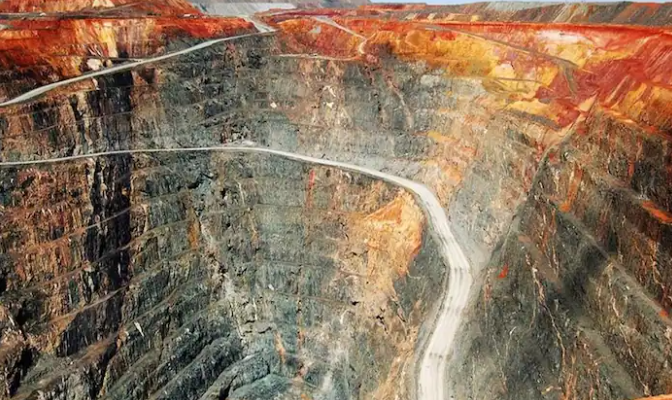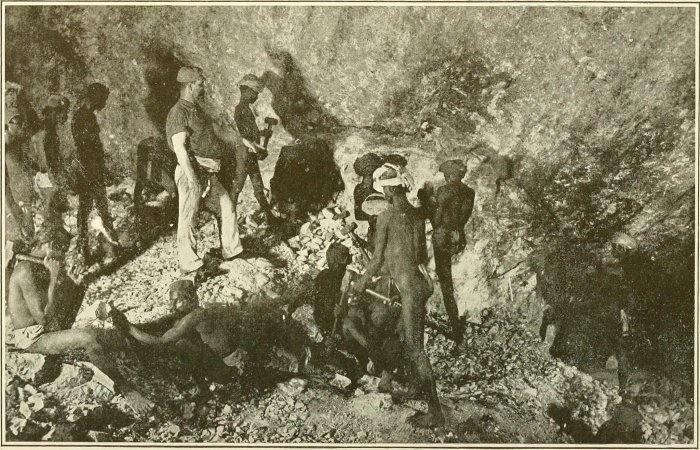The trailer of KGF Chapter 2 has created the same buzz as KGF did. Fans are eagerly waiting for this so that they can know who will become the real owner of that age-old gold mine. If you are thinking that like the characters of the film or the story, that gold mine is also fictional, then just wait… this mine is real. The surprising thing is that for 121 years gold came out from here and kept on coming out.
Table of Contents
KGF mine is the discovery of British era

KGF i.e. Kolar Gold Fields is located in the South East region of Karnataka and is 100 kms away from KGF Township on Bangalore-Chennai Expressway. This place is special in many ways. In 1871, when India was a slave of the British, British soldier Michael Fitzgerald Llewelly made his home in Bangalore. He spent most of his time between books and articles. He was also very interested in the history of India. One such day saw an article in the Asiatic Journal published in 1804. In which it was said that there is so much gold in Kolar that people take it out by digging the ground by hand.
After killing Tipu Sultan in the Battle of Srirangapatna in 1799, the British took control of Kolar and the surrounding area. Later this land was given to the Mysore state, but the rulers kept Kolar in their share. They knew there was gold here. In Alas, in the Chola Empire, people used to extract gold by digging the land by hand.
Lieutenant John Warren of the British government had even announced to reward those who gave the gold address there. After which, riding in a bullock cart from Kolar village, some villagers reached Warren. When he cleaned the wheels of his bullock cart in front of Warren, traces of gold came out of its soil.
After a long investigation, it was understood that the way the people of Kolar excavate gold by hand, by this 56 kg of clay could be extracted from the humdrum. After this, between 1804 and 1860, the British tried hard to extract gold from the land. Villagers were engaged in this work, many lost their lives but nothing special was achieved.
Levelli found this information interesting and started looking for gold once again.
Excavation could start after hard work

In 1873, Leveli took permission from the Maharaja of Mysore to excavate at Kolar and the work began. Leveli got permission to excavate for 20 years, of which the first two years took him only to collect laborers. Work began on the site in 1875 and gold consignments came out. The laborers who took the gold were also surprised that they were living on the gold reserves for so many years and they did not get the news.
The KGF mines used to work 24 hours a day. Women, men, children all worked in the mines. Living there, sleeping there and digging and extracting gold. Chimneys were used to remove the darkness in the mines, but the British used electricity to extract gold from here. KGF is the first area in India where electricity came. The innocent villagers were thinking seeing the bulb of electricity that gold had brightened their fortunes, but it only kept filling the pockets of the British.
To meet the power requirement of the Kolar Gold Field, 130 km from there, the Kaveri Power Station was built. It is the second largest plant in Asia after Japan. Which is still in Shivanasamudra of Mandya district of Karnataka. After the arrival of electricity, a lot of work started through machines. Due to which the work of the mine accelerated. By 1902, KGF started extracting 95 percent of India’s gold. And by 1905, India reached the sixth place in the world in terms of gold mining.
KGF was nationalized again

This place was called Little England
KGF was not only a gold mine, it also became a tourist area for the British. The weather here was cold, so KGF was introduced as the England of India and many British families came and settled here. At one time, 30 thousand laborers used to work in the mine, but gradually workers came from nearby states also and their number increased to lakhs.
The families of laborers started living by building houses near the mine and Kolar was filled with people. India became independent in 1947. The British left the country. He took as much gold as he could with him. After this the talk of nationalization of KGF arose. The government was formed and this mine was nationalized in 1956.
In 1970, the mine was revived in the name of Bharat Gold Mines Limited Company of the Government of India. However, nothing changed for the workers. He was first working for the British and then started doing it for the Government of India. However, the Indian government too could not do anything special in the mine. The British had already taken most of the gold with them.
By 1979, the situation came that the company was not even able to pay wages to the workers. Workers and employees were fired from their jobs. The company went into such a loss that it could not even pay its electricity bills. Due to which the work in the mine stopped. A few years passed just like this and in 2001 Bharat Gold Mines Limited Company stopped digging.
Now only ruins are left here. Gold was excavated in KGF for 121 years and government accounts show that about 900 tonnes of gold came out from here. Maybe it’s more than we thought! However, in 2016 once again the process of auction to revive KGF was discussed but only the talk has happened so far. The government believes that there may be more gold here.
The labor factor in the story of KGF is absolutely correct. He remained a slave to the British and then of the mine contractors built in independent India! He used to dig gold but lived his life in the dark. The dead bodies of many laborers are buried in the ruined mines of Kolar, who went in search of gold and could never return.
